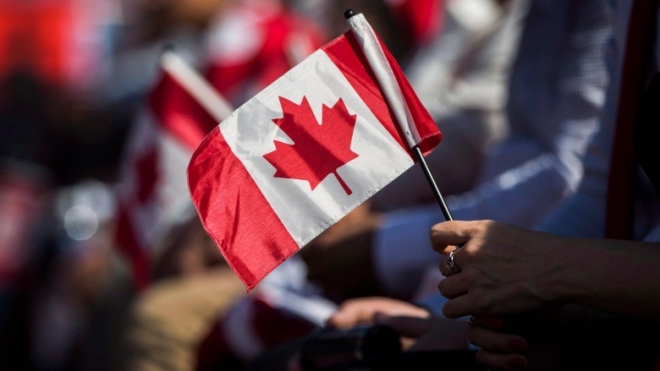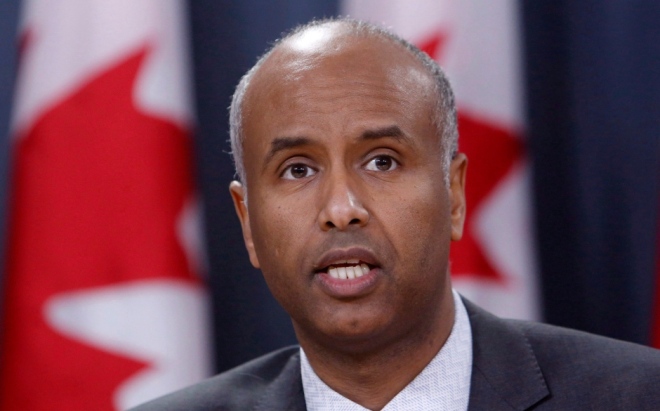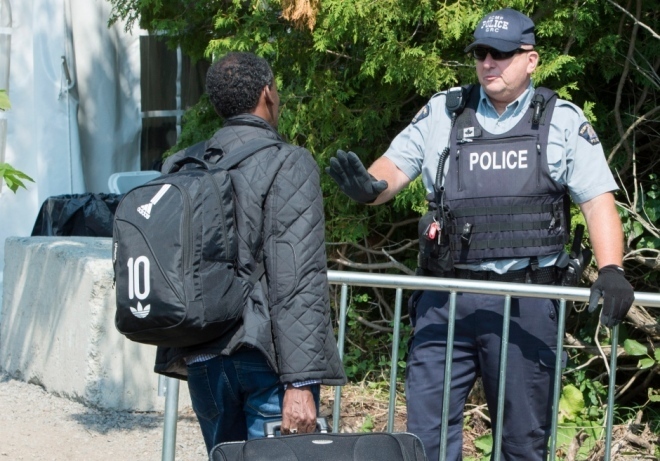
Monday October 16, 2017

Canada's immigration system permits newcomers to the country based on economic class, family reunification or humanitarian grounds. (Mark Blinch/Canadian Press)
The Liberal government is finalizing its 2018 immigration plan, aiming to strike the right balance amid a global migration crisis, a surge in illegal border-crossers and persistent labour gaps across the country.
Immigration Minister Ahmed Hussen recently wrapped up cross-country consultations and is preparing to table the annual immigration levels in the House of Commons by the Nov. 1 deadline
As he sets next year's target for the number of newcomers allowed into the country, the government's goal is to attract top talent in a competitive global market while reuniting families and offering refuge to people displaced by disaster and conflict.
"Canada's immigration system continues to be based on compassion, efficiency and economic opportunity for all, while protecting the health, safety and security of Canadians," reads a statement from Hussen to CBC News.
"Canada's system of immigration has been recognized internationally as a thoughtful, responsible approach that takes into consideration the need for more immigrants while balancing our fiscal and global responsibilities."
Conservative Immigration critic Michelle Rempel said the government has so far failed to develop a sound strategy to ensure immigrants help fill labour gaps in certain sectors and in remote and less populated parts of the country.
"There are some bigger policy questions around how the government is incenting people in high unemployment areas to be matched with existing work, and how the government is going to seek to pull people that are coming into the country, new Canadians, instead of becoming isolated in small pockets in major urban centres, how perhaps those streams could be used to bolster immigration needs in areas of high demand in the country, where people aren't settling," she told CBC News.
'Extreme change' in context
Rempel said Canada's 2018 immigration plan must adapt to an "extreme change in context," with a spike in asylum seekers and an escalating global migration crisis. She said the government must do more to ensure refugees are properly integrated and become productive members of the workforce.

Immigration Minister Ahmed Hussen will table Canada's 2018 immigration levels in the House of Commons by Nov. 1. (Fred Chartrand/Canadian Press)
"There is a big discussion here and the levels report means a lot," she said. "Canadians are going to be looking at it in terms of whether or not the system is working, and that's a pretty big question."
Asylum seekers who have crossed into Canada outside border points are not included in the levels plan, according to Hussen's office.
The 2017 immigration plan called for 300,000 immigrants, boosting numbers in the "economic" class that includes skilled workers, businesspeople and caregivers as well as an increase in the family class for sponsored spouses, partners, children, parents and grandparents.
NDP Immigration critic Jenny Kwan called on the government to be more ambitious with its 2018 plan, insisting immigration is the best way to offset an aging population and fill significant labour gaps.
Federal policy must focus on bringing in a "balanced and diverse range" of immigrants instead of focusing on high-skilled workers for permanent residents and relying on temporary foreign workers for lower-skilled jobs.
"Why can't we use our immigration system to meet that labour skills shortage? The full range of it, not just one sector of the economy? We have a full need with a full range of different labour skills that are required in Canada, and we should be bringing in an immigration policy that reflects that," she said.
Kwan also said at a time of mass migration and displacement, Canada should lift the cap on privately sponsored refugees and bring in more who are assisted by the government.

An asylum seeker, claiming to be from Eritrea, is confronted by an RCMP officer as he crosses the border into Canada from the United States on Aug. 21 near Champlain, N.Y. (Paul Chiasson/Canadian Press)
Janet Dench, executive director of the Canadian Council for Refugees, said Canada could easily bring in 20,000 more each year, yet in 2017, the target was set at 7,500.
"It's very tiny. There's over a million refugees that the UNHCR has identified as in need of resettlement. So for Canada to only resettle 7,500 is really far below the need, and far below Canada's capacity, as we showed with the Syrian refugees in 2016," she said. "We know we have the capacity."
Dench suggested the Liberal government's Syrian refugee effort was a way of "checking off the box" for refugees instead of making a strong, sustained commitment.
Aging population, low birth rate
The government's Advisory Council on Economic Growth had recommended that Canada boost its immigration levels to 450,000 by 2021 to stimulate the economy and tackle an aging population and low birth rate.
Patrick Snider, director of skills and immigration policy for the Canadian Chamber of Commerce, said higher immigration levels bring potential for business and boosting Canada's competitiveness, but whether it succeeds depends on the approach.
He said the government must target newcomers with the right skills for in-demand occupations, yet the current ranking system focuses strictly on education and technical specifications instead of being more flexible to tap those with intelligence, drive and trainability.
"There are high-skilled people who have gained their knowledge through job experience who are in demand in Canada. They might not necessarily have technical degrees, but they have skills that are needed for Canadian companies," Snider said.
Adapted rules could recruit self-taught people in the high-tech, programming or graphic design fields, for example, who didn't go through a university program but have the valuable skills employers need.
As for the numbers, Snider said they must reflect how much Canada can afford to properly resettle as well as the direct benefits to the economy.
The Liberals have launched the Global Skills Strategy to attract top talent in an increasingly competitive international market, and Snider said Canada's welcoming reputation gives us an edge for highly skilled workers looking for a place to settle.
Improved integration critical
A recent Conference Board of Canada report said hiking levels will benefit the economy, but only if there is an expanded capacity to integrate newcomers socially and economically. It warned that upping the intake without addressing the challenges could lead to economic costs and diminished public support for immigration.
Dory Jade, president of the Canadian Association of Professional Immigration Consultants, said there is also the challenge of having the resources in place to process cases when there is already a backlog.
He would like the 2018 target to exceed 350,000, but he expects the government will keep the figure between 300,000 and 305,000 due to stretched resources.
"We know that the government doesn't have the capacity. No matter how hard we push, the machine is at full capacity," he said.